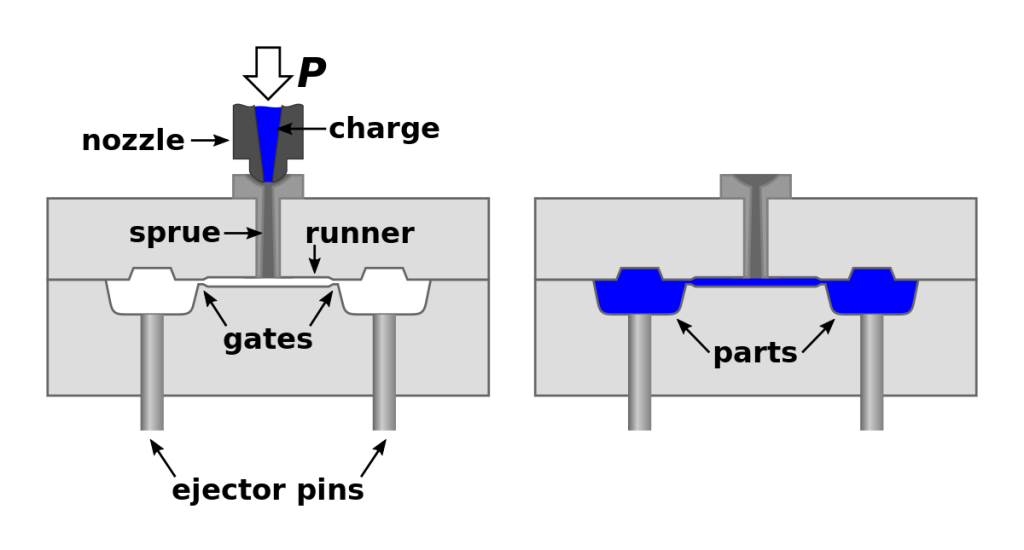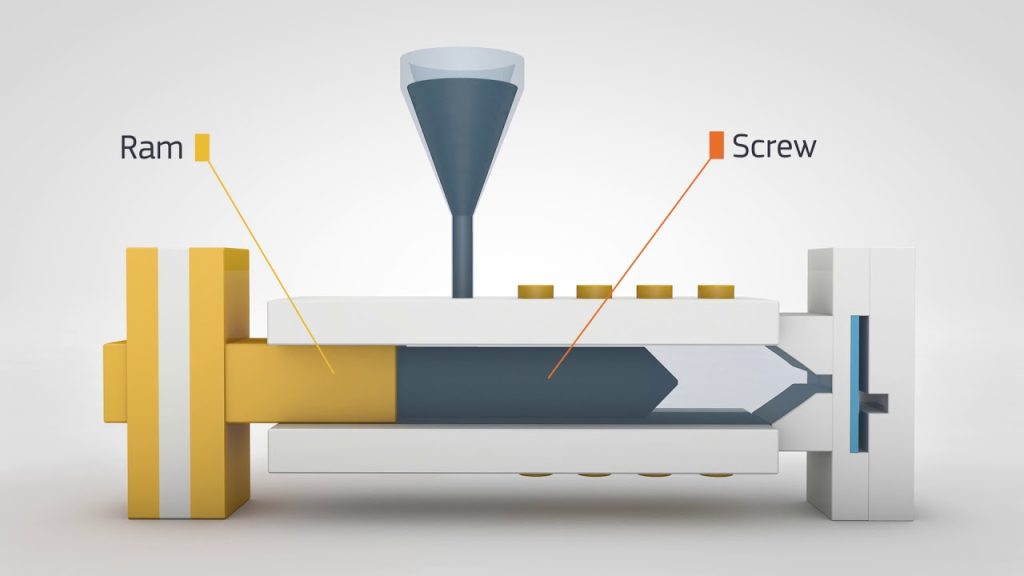Table of Contents
In the world of manufacturing, injection molding has become a widely used method for creating plastic parts. But have you ever wondered if the same method can be used for metal parts? The answer is yes, and in this article, we will explore the process of injection molding metals and the benefits it can provide.
From automotive to aerospace industries, metal injection molding has become a popular choice due to its ability to create complex shapes, reduce waste, and increase efficiency. So, let’s dive into the world of metal injection molding and understand how it works.
Can You Injection Mold Metal?
Injection molding is a process used to manufacture plastic parts, but it is not typically used for metal. However, there are some metal injection molding (MIM) processes that use a similar process to injection molding to create small, complex metal parts. MIM is often used in industries like aerospace, medical, and electronics.
Can You Injection Mold Metal?
If you’re in the manufacturing industry, you may have wondered if it’s possible to injection mold metal. Injection molding is a popular method for creating plastic parts, but can the same technique be applied to metal? In this article, we’ll explore the answer to that question.
What is Injection Molding?
Injection molding is a manufacturing process that involves injecting molten material into a mold, allowing it to cool and solidify, and then removing the finished product from the mold. This technique is commonly used for creating plastic parts, but it can also be used for metal under certain circumstances.
To injection mold metal, the metal must first be melted down and turned into a liquid form. This liquid metal is then injected into a mold, much like with plastic injection molding. However, the mold must be able to withstand the high temperatures of the molten metal, which can reach up to 1300°C.
The Challenges of Injection Molding Metal
While it is possible to injection mold metal, there are several challenges that must be overcome. One of the biggest challenges is the high temperature required to melt the metal. This can cause the mold to degrade and wear out quickly, which can lead to defects in the finished product.
Another challenge is the high pressure required to inject the metal into the mold. This pressure can cause the mold to crack or break, which can also lead to defects in the finished product.
Benefits of Injection Molding Metal
Despite the challenges, there are several benefits to injection molding metal. One of the biggest benefits is the ability to create complex shapes and designs that would be difficult or impossible to create with other manufacturing techniques. Injection molding also allows for high production rates and consistent quality.
Injection Molding Metal vs. Plastic
While injection molding metal and plastic may seem similar, there are several key differences. Metal injection molding requires much higher temperatures and pressures than plastic injection molding, which makes it more challenging and expensive. However, metal parts tend to be stronger and more durable than plastic parts, which can make them a better choice for certain applications.
The Bottom Line
So, can you injection mold metal? The answer is yes, but it’s not always easy or practical. Metal injection molding requires specialized equipment and expertise, and it can be more expensive than other manufacturing techniques. However, if you need to create metal parts with complex shapes and designs, injection molding may be the best option for you.
Frequently Asked Questions
Metal injection molding is a manufacturing process that has been around for quite some time. It is an efficient and cost-effective way to produce complex metal parts. However, there is still some confusion about whether injection molding can be used for metal. Here are some common questions and answers about metal injection molding:
Can you injection mold metal?
Yes, you can injection mold metal. The process is called metal injection molding (MIM), and it is similar to plastic injection molding. The main difference is that metal powders are used instead of plastic resins.
The metal powders are mixed with a binding agent to create a feedstock that can be injected into a mold. The mold is heated to a high temperature, which melts the binding agent and fuses the metal powders together. Once the part has cooled and solidified, the binding agent is removed, leaving a fully dense metal part.
What metals can be injection molded?
A wide variety of metals can be injection molded, including stainless steel, copper, titanium, and more. The metal powders used in the process can be tailored to meet specific requirements for strength, wear resistance, and other properties.
However, not all metals are suitable for metal injection molding. Metals with a high melting point, such as tungsten and molybdenum, are difficult to mold because they require very high temperatures. Additionally, some metals may react with the binding agent, which can affect the final properties of the part.
What are the advantages of metal injection molding?
Metal injection molding offers several advantages over traditional manufacturing methods. First, it can produce complex parts with high precision and accuracy. This makes it ideal for applications where tight tolerances are required.
Second, metal injection molding is a cost-effective way to produce small to medium-sized batches of parts. The process is highly automated, which reduces labor costs and increases efficiency. Finally, metal injection molding can produce parts with a wide range of geometries, making it a versatile manufacturing process.
What are the disadvantages of metal injection molding?
While metal injection molding has many advantages, it also has some limitations. First, the process can be slow compared to other manufacturing methods. This means that it may not be suitable for high-volume production runs.
Second, metal injection molding requires specialized equipment and expertise, which can be expensive. This means that it may not be cost-effective for small production runs. Finally, the final properties of the part can be affected by the binding agent used in the process, so careful selection and testing of the feedstock is required.
What industries use metal injection molding?
Metal injection molding is used in a wide variety of industries, including automotive, aerospace, medical, and electronics. It is ideal for producing small to medium-sized parts with complex geometries, such as gears, bearings, and surgical instruments.
Additionally, metal injection molding can produce parts with high strength and wear resistance, making it suitable for applications where durability is important. Overall, metal injection molding is a versatile manufacturing process that can be used in many different industries.
In conclusion, injection molding is a popular manufacturing process that is commonly used to produce plastic parts. However, it is not possible to injection mold metal using the same process.
While there are some similarities between injection molding metal and plastic, the manufacturing process for metal requires additional steps and equipment. This includes using high-pressure casting, forging, or extrusion methods to shape the metal.
Overall, injection molding is a valuable method for producing plastic parts, but it is not suitable for metal manufacturing. It is important to understand the differences between the two processes and select the appropriate technique for your desired outcome.
Request a quote today!
[contact-form-7 id="1578" title="Contact form"]
Please compress the file into a ZIP or RAR file before uploading. Alternatively, send through your RFQ by email.
enquires@unitymanufacture.com





